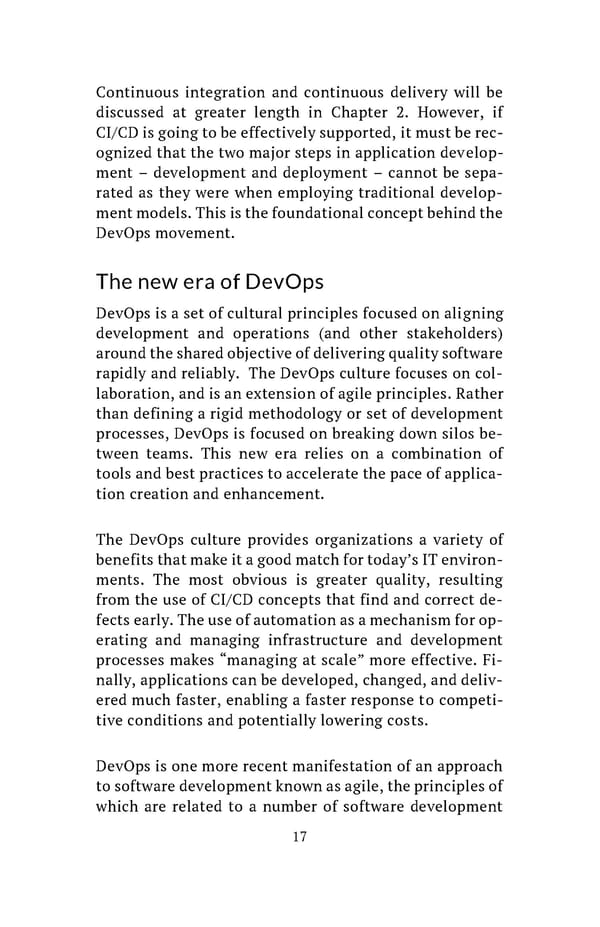Continuous integration and continuous delivery will be discussed at greater length in Chapter 2. However, if CI/CD is going to be effectively supported, it must be rec- ognized that the two major steps in application develop- ment – development and deployment – cannot be sepa- rated as they were when employing traditional develop- ment models. This is the foundational concept behind the DevOps movement. The new era of DevOps DevOps is a set of cultural principles focused on aligning development and operations (and other stakeholders) around the shared objective of delivering quality software rapidly and reliably. The DevOps culture focuses on col- laboration, and is an extension of agile principles. Rather than defining a rigid methodology or set of development processes, DevOps is focused on breaking down silos be- tween teams. This new era relies on a combination of tools and best practices to accelerate the pace of applica- tion creation and enhancement. The DevOps culture provides organizations a variety of benefits that make it a good match for today’s IT environ- ments. The most obvious is greater quality, resulting from the use of CI/CD concepts that find and correct de- fects early. The use of automation as a mechanism for op- erating and managing infrastructure and development processes makes “managing at scale” more effective. Fi- nally, applications can be developed, changed, and deliv- ered much faster, enabling a faster response to competi- tive conditions and potentially lowering costs. DevOps is one more recent manifestation of an approach to software development known as agile, the principles of which are related to a number of software development 17
 Building Cloud Native Apps Painlessly Page 19 Page 21
Building Cloud Native Apps Painlessly Page 19 Page 21